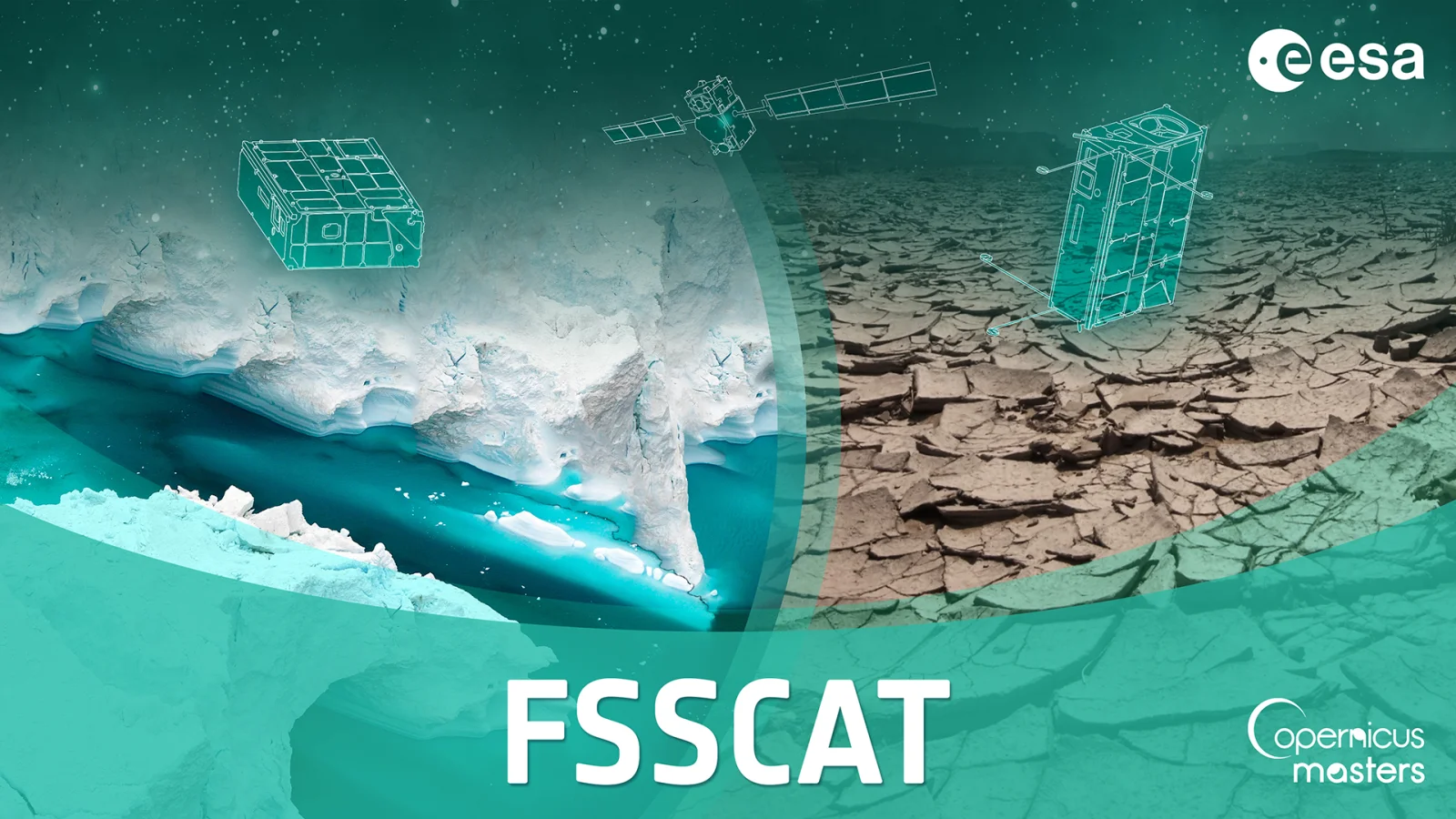CubeCat Programme (³Cat)


A saga of CubeSat-type nanosatellites devoted to a variety of applications in the field of Earth Observation

CubeCats are a series of nanosatellites developed at the NanoSat Lab of the Universitat Politècnica de Catalunya that have participated in several missions, such as FSSCat (Federated Satellite Systems/³Cat-5), which contributes to the EU's Copernicus programme by providing data for terrestrial and marine services.
CubeCats (³Cat) are CubeSat-type nanosatellites, small devices (combinations of approximately 10-centimetre cubes), weighing between one and ten kilograms, which, thanks to the use of standardised commercial components, can be developed by groups of university students and researchers.
³Cat-1 was the first satellite developed in Catalonia and the first in a series of nanosatellite missions designed and developed in the NanoSat Lab of the Universitat Politècnica de Catalunya - BarcelonaTech (UPC). It was launched using an Indian PSLV rocket in 2018 after three failed attempts (with one Dnepr and two Falcon 9 rockets). 3Cat-2 was the second satellite, but the first one to be launched in 2016 using a Chinese LMD-2 rocket. It was the third 6U CubeSat in the world and carried a novel GNSS-R (Global Navigation Satellite System - Reflectometry) payload.
Based on the experience gained with the ³Cat-1 and the ³Cat-2, the UPC NanoSat Lab has designed the ³Cat-4 with only one unit (1U) to demonstrate the suitability of this even smaller type of platform to perform Earth Observation applications with passive instruments. The ³Cat-4 has also a GNSS-R instrument, but features a novel deployable helix antenna. It was launched in July 2024 in the Ariane 6 maiden flight within the ESA Academy “Fly your satellite!” programme.
The UPC NanoSat Lab has started the initial developments of a new concept mission, 3Cat-8, which includes innovative technological demonstrators (electrospray ion engine, PocketQubes deployer, Fresnel Zone Plate -FZP- deployable antenna) with two scientific experiments to obtain multispectral imagery of the aurora, and measure ionospheric scintillation. These PocketQubes (PoCat-1 and PoCat-2) have been financed by the grants of the Institute of Electrical and Electronic Engineers (IEEE) to develop an Open PocketQube kit and the associated educational materials, which will be made openly available.
FSSCat mission
The ‘Federated Satellite Systems/³Cat-5’, FSSCat, was the first mission based on CubeSats, which contributes to the EU Copernicus programme providing data for the land and marine services. It was developed in the UPC NanoSat Lab and consisted of two 6U CubeSats (³Cat-5/A and ³Cat-5/B) flying together to monitor polar ice and measure soil moisture.
Among the state-of-the-art technology used in FSSCat was the FMPL-2, a sensor combining a GNSS Reflectometer and a Microwave Radiometer developed by the UPC, and HyperScout-2, an hyperspectral camera developed by Cosine (Netherlands) that operates in the visible, near-infrared and thermal spectrum. HyperScout-2 was also enhanced with the PhiSat-1 board, the very first Artificial intelligence experiment on board a satellite for cloud detection. The two satellites also have onboard an inter-satellite communication system, which uses frequencies in the UHF and optical frequency ranges, developed by the UPC and Golbriak, respectively. The mission won the Sentinel Small Satellite (S^3) Challenge Award of ESA and was honoured as the Copernicus Masters Overall Winner in 2017.
Launched to space on 3 September 2020, the mission's primary goals were the generation of coarse resolution soil moisture, sea ice extent and thickness maps using L-band microwave radiometry and GNSS-Reflectometry, enhanced resolution soil moisture maps applying pixel downscaling techniques, and the test of techniques for future satellite federations.
The data analysis of the FSSCat mission was carried out during 2021 and apart from recovering soil moisture and polar ice, it allowed to recover sea surface salinity over the Arctic and Antarctic oceans. This was not considered initially in the mission goals due to its high difficulty.
THE IEEC CONTRIBUTION
The IEEC was the launch sponsor for 3Cat-1. In the case of 3Cat-2, the nanosatellite included an In Orbit Demonstrator (IOD) of a very low noise magnetometer. The IOD was developed by the IEEC and it will be included in the future ESA's LISA mission. The IEEC has also acted as sponsor, together with ESA, for the 3Cat-4.
The IEEC is contributing to the 3Cat-8 mission with the development of a payload that includes: the multispectral camera for the analysis of the aurora, the instrument control unit of the camera and the communications module based on a Software Defined Radio (SDR). This payload is based on the C3SatP platform, developed by the IEEC, and currently flying as an IOD in the GENEO (Menut) mission, launched in the framework of the NewSpace Strategy of Catalonia. Moreover, the IEEC is sponsoring the launch of the 3Cat-8 by financing the Poly-Picosatellite Orbital Deployer (P-POD) to be integrated in the designed launcher provider.
As for FSSCat, some of the innovative techniques that travel on board, such as pixel decomposition by merging visible and near-infrared data and microwave radiometer data, have been developed by the UPC, by the Institute of Marine Sciences of the Spanish National Research Council (CSIC), with the support of the IEEC and within the framework of the Soil Moisture Ocean Salinity (SMOS) project, and by DEIMOS Engenharia.
